Review for Planetes - Collector's Edition
Introduction
It seems churlish of me to start this review with an expression of disappointment, especially with a collection that I was certain to buy regardless. Indeed I had put my money down on pre-order late last year, months before its actual release. It’s just that when advertising this collection with the statement that it would have all of the previously released extra features, I set my expectations a little too high. To this point, I have been enjoying the US Bandai 7-disc DVD collection. When originally released as single volumes in the US, the first three volumes were two disc releases which had plenty of exclusive extras on the second discs, including some tantalising NASA featurettes. Those second discs weren’t included in the complete DVD collection, so I read “all the extra features” to mean all of the extra features world-wide. Instead, this release has the extra features from the UK release, which to be fair does add a few more extras than that Bandai collection, but not all of the US exclusive single volume disc 2 extras.
I also start watching this collection in the week that the Russians tested an anti-satellite weapon that added thousands of pieces of debris into low earth orbit, sending the crew of the ISS scrambling for the lifeboats. They should watch Planetes, and start cleaning up their mess instead of making manned spaceflight ever more difficult.
It’s 2075, and mankind has finally established a proper presence in space. No longer is Low Earth Orbit the limit to our exploration, and as well as scientific research, people live and work in space, exploiting the resources that a weary Earth depends on. There are people living on the moon, travelling the asteroids and beyond. But 116 years of space exploration has left its mark. All those satellites, launches, space stations and space walks have left a terrible legacy of debris. In Earth orbit now are millions of pieces of junk, ranging from the smallest screw, to defunct satellites the size of buses, all of them moving in random directions at up to 8 kilometres a second. At that velocity, a spaceship doesn’t stand a chance, a fact made tragically clear in 2069, when a suborbital liner was hulled by piece of debris. Since then, a new space industry has arrived, garbage collection. Now all companies with a presence in space are required to have a debris section, a department whose purpose is to spend time out on EVA, cleaning up the mess and making space safer. It’s not a glamorous job, considered a dead end in most company hierarchies, and it’s downright dangerous to boot.
Technora Corporation’s Debris Section is more downtrodden than most, laughingly derided as Half Section because it is always at half strength, it’s where the company’s deadbeats and mavericks end up. Rookie Ai Tanabe has always wanted to work in space, and she’s excited to arrive at Technora Space Station 7, a large installation, with two contra-rotating wheels to provide gravity for its large contingent of employees. She’s been assigned to Debris Section, but doesn’t realise that it’s the last button on the elevator. The eager young space cadet walks into utter mayhem. But as she begins her on the job training, she learns that the job that Debris Section does is honourable, and the people that she works with are a close-knit family. Among them are Hachirota ‘Hachimaki’ Hoshino, who dreams of owning his own spaceship, pilot Fee Carmichael, whose twenty a day habit requires special measures to sustain, and co-pilot Yuri Mihairokoh, who takes care of a menagerie of pets for station residents. Manager Philippe Myers handles the paperwork in the office, and his bizarre second in command is would-be entertainer Arvind Lavie, while the sanest one of the lot is the temp, Edelgard Rivera. Together they boldly clean up where no one has cleaned before…
The 26 episodes of Planetes are presented across 3 Blu-ray discs from All the Anime.
Disc 1
1. Outside The Atmosphere
2. Like A Dream
3. Return Trajectory
4. Part Of The Job
5. Fly Me To The Moon
6. The Lunar Flying Squirrels
7. Extraterrestrial Girl
8. A Place To Cling To
9. Regrets
Disc 2
10. A Sky Of Stardust
11. Boundary Line
12. A Modest Request
13. Scenery With A Rocket
14. Turning Point
15. In Her Case
16. Ignition
17. His Reasons
18. Debris Section’s Last Day
Disc 3
19. Endings Are Always…
20. Tentative Steps
21. Tandem Mirror
22. Exposure
23. Debris Cluster
24. Love
25. The Lost
26. And The Days We Chance Upon
Picture
Somewhere along the way, the distributors decided that customers won’t accept a presentation as HD unless it’s in 1080p 24fps format. That is especially problematic in shows of this era, where multiple frame rates were used in the animation, with CGI elements rendered at 30fps. When those are presented at 24fps, that results in jerkiness, ghosting or missing frames, and has marred Blu-ray releases like Cowboy Bebop and Ghost in the Shell: Stand Alone Complex. It strikes Planetes as well now. The HD presentation is good for the most part, clear and sharp, with excellent detail and consistent colour, very much a step up over the DVD release, but then there are those CG elements, the space ships and space stations. The beginning of every episode has the Greek letters spelling Planetes ghosting past the screen, and any scene with a pan or scroll might begin with a judder. Shows like this would have been better off presented in 1080i 60Hz. It’s worth checking out the Blu-ray trailers on disc 3, which are presented in that format, and are smoother, lacking the ghosting that you’ll see in the episodes on these discs.
But the animation itself is sublime. This is a show that blends reality with sci-fi fantasy, looking to present a vision of the future that is wholly plausible. The character designs reflect this with a more realistic look. No large manga eyes here. The future is pretty much the modern day given an extrapolated makeover, and everyday objects are immediately recognisable. That’s supplemented with the futuristic designs of space travel, HOTOL like earth to space liners, 2001 style space stations with spinning wheels to provide gravity through centripetal acceleration, and the sheer imagination that goes into vehicles that are built and work in space, never to enter atmosphere. There are one or two cute extrapolations that will probably become reality sometime in the future. One that I’m absolutely enchanted by is the faceless spacesuit. Working a job collecting orbiting debris is perilous enough, but a helmet with a glass visor would be suicidal. But in Planetes, the glass visors are protected by solid metal faceplates. Built in cameras capture the view outside and project it onto an internal screen, complete with heads-up display and telemetry. The animation itself is smooth and detailed, this is a show that has a substantial budget, and that shows on the screen, with the episodes at times approaching theatrical quality.
Sound
Planetes offers DTS-HD MA 5.1 Surround Japanese, and 2.0 Stereo Japanese and English, with optional subtitles and signs. I stuck with the Japanese audio, and despite my initial fears of an overcooked upmix, the surround audio is the way to go, providing a nice, immersive, and well designed experience. A couple of times, I did feel that music wasn’t better served with this track, but it was a small issue. I did try the stereo at these times, and if you want that authentic mid 2000s, TV broadcast experience, it’s perfectly fine, although I did notice that the stereo Japanese track was out of sync on episode 7.
The themes are excellent, with a particularly rousing track over the opening credits (animated history of spaceflight done better than Star Trek Enterprise), and something suitably jolly for the end credits. The incidental music is well suited to the show as well. There is a good use of the surround speakers, effects and ambient noise are well represented, but the wonderful thing is that space is quite appropriately silent here. You’ll only hear the engines of a ship from the inside, no Star Wars type rumble, no explosive rocket thrust, and dialogue in space is only audible because we as the audience are eavesdropping on the astronauts’ radio communications.
Extras
You get 3 discs held in a foldout digipack, which slips inside a thick card slipcase, and naturally you get a whole lot of artwork to appreciate. There is a blurb sheet under the cellophane, which you can store inside the case as well. You also get an 84 page artbook in landscape format. It’s all character art, and 99% of the images are in black line art form.
The discs boot to static menus, and at the end of each disc, they’ve scaled up the English language credit scrolls from the DVDs. They look pretty stupid, sped up to double speed to fit the length of the end theme song.
The Japanese language commentaries from the DVDs are brought over to Blu-ray, spread across all three discs. There are commentaries for episodes 1, 10, 12, 16, 24, 25 and 26.
The rest of the extras are on disc 3.
There are 11 Clean Openings (16:53)
2 Clean Endings (8:27)
Picture Dramas x9 (29:34)
TV Promos x5 (16:25)
Blu-ray Promos x3 (3:57)
Disassembled Opening (9:50)
Galleries (Sketch, Illustration, Design Works, and End Card)
Tanaka Kazunari Visits JAXA (17:12)
I can’t retire my US DVDs! Sure, getting the other Picture Dramas is great, and the JAXA featurette is something I missed. But the Digital Comics are missing from this release, as is the Orbital Debris featurette.
Conclusion
One thing that I’ve been discovering of late, with a sinking feeling, is that my entertainment preferences aren’t fixed. Sure, I can shell out more than I’m comfortable with on my favourite TV shows and movies, and I always had this expectation that I’d get my money’s worth re-watching them. But I’m finding more and more that I’m losing touch with stuff that I was infatuated with even ten years ago. I’m finding more and more nits to pick, I’m less forgiving of flaws, or the story no longer resonates with me, or worst of all, familiarity has bred complacency. No danger of that ever happening with Planetes. It’s got amazing, quality animation, wonderfully written and complex characters, and a brilliant story. It is the perfect package, and I can’t believe that I’ll ever tire of this show. I was even more engrossed in the experience this time than the previous viewings I gave it. It just gets better and better.
Planetes is closer to science fact than science fiction. It offers a realistic future of space travel, the sort of realism that Hollywood has never attempted unless it’s in a historical recreation, and it leaves you wondering just why not. This is the most that I’ve been entertained by a ‘sci-fi’ in ages. Planetes extrapolates some sixty years into the future, but its extrapolations aren’t that extravagant or fanciful. Its wildest fantasy is that somewhere in the future, we get nuclear fusion working, and we finally give up our dependence on fossil fuels. And there would have been a time when I was younger and more optimistic that I wouldn’t have called that a fantasy. Mankind has established a permanent presence in space, and is beginning to explore the solar system, and there are hundreds of thousands of people living and working on the moon, which supplies the Helium-3 needed to fuel fusion reactors. But, space travel works just the same way as it does today. It’s safer, it’s more commonplace, and it’s open to everyone who can afford it, not just the mega-rich and the elite, but it still means strapping yourself to a glorified roman candle and lighting the blue touch-paper. Unless you spin a large wheel to provide centripetal acceleration, you have to live in zero-G, and travel times between worlds is determined by ballistics, orbits and parabolic trajectories (you aim your ship at where the moon will be in three days, give yourself a kick to break free of the Earth’s pull, and then wait until you get there), and height of orbit is determined by velocity, not altitude. Also, living in space has an effect on the human body.
So far so 2001, or at least the first half of the movie in terms of the realism, but where Planetes becomes interesting is that it makes space travel mundane, an everyday occurrence, something that people take for granted, along with the necessary precautions and safety measures that accompany it. It’s a means to an end, not the end in itself, but where the end could have been aliens or time travel or some other arch concept, in Planetes it’s as something as humdrum as rubbish collection. Of course collecting trash in space doesn’t require you to hang off the end of a space truck, but the problem of rubbish in space is a very real one, with tiny bits of manmade debris floating in random orbits around the world, and posing a genuine risk to manned spaceflight. Every time that man ventures into space he leaves rubbish up there. It’s unavoidable with little bits of metal discarded when a rocket’s final stage separates, or a satellite is deployed, tools lost by space-walking astronauts, or golf balls sent whizzing by moronic idiots for a few million dollars of sponsorship. The first image of the show is that of a tiny screw causing tragedy when it strikes a suborbital liner. The idea being that after 100 years of spaceflight there is a lot more junk up there. It then becomes the responsibility of every company operating in space to clean up that junk, and institute a debris section in each of their corporate structures to keep space safe.
The wonders of space travel made mundane, and a job that is even more so, you may be wondering what the draw of the show is. It takes this set up as a situation, then introduces the characters, and becomes a slice of life story. Rubbish collecting isn’t the most glamorous of careers, and Technora’s Debris Section is the dead end of the company, where all the losers and mavericks end up. Into this dead end walks Ai Tanabe, eager young space cadet, with a childlike wonder at finally getting to work in space, and an innocent and naïve outlook on life. On her first day on the job, she encounters Hachirota ‘Hachimaki’ Hoshino, a cynical self-centred astronaut who has an ambition to one day buy his own ship. Of course the two wind up working together, and the story follows the growth of these two characters over the next couple of years.
There are three distinct phases to the show, with the earlier episodes geared more towards comedy. Planetes is still setting up the world at this point, establishing the rules and introducing the characters, so it keeps the stories light and humorous, as well as playing more on the wonder of space travel. At this point the idea of an animation accurately depicting space travel is still a novelty, and you wind up paying attention to each EVA, savouring the look of Earth from orbit, or the bunny-hop that is actually a moonwalk. Then around the middle section, once all the characters have been introduced, the emphasis turns to developing them and their relationships with each other. It begins to get a little more serious around here as the humour is toned down, and finding out about their backgrounds shows that space isn’t the utopian future that you’d think it would be. This section does stretch a little, and it does threaten to venture from drama into soap and corporate politics, when the final Von Braun arc begins. The Von Braun is humanity’s next big adventure, the first manned exploratory mission to Jupiter. By now though, it’s become clear that Earth is just as divided as ever, and those divisions and hatreds have continued into space. Space is the province of the first world, the rich and powerful nations that have reached into space, and now set up the rules for everyone else. They also intend to hog extraterrestrial resources, while the rest of the world goes hungry. This irks the Third World, those former oil-producing nations that no longer have customers, and whoever else has to ask politely to dine at the big boys’ table. This is repeated in microcosm among the show’s diverse characters, and quite naturally splits and confrontations occur, especially when terrorist attacks start taking place in space.
And in the middle of all this are the characters of Tanabe and Hachimaki, two people who are drawn to each other despite their differences. The earnest Tanabe re-awakens a sense of wonder in Hachimaki, while his pragmatism offers new perspective for Tanabe. Naturally the two are destined to be together, only destiny is never that easy. Their own expectations cloud their perceptions of each other, and when cold reality strikes, the two wind up drifting apart. Then events transpire that shake both of their worldviews, Tanabe’s naiveté and Hachimaki’s cynicism, and they wind up injured and incomplete. In the best tradition of such stories, they both need the other to heal. Sci-fi nut that I am, and as much as I can constantly rave about the look, realism, and the sense that unlike any other such show, this future is actually achievable, it’s actually the central relationship of Tanabe and Hachimaki that is the strong point of the show. At the end of the 26 episodes, I was more concerned with what would happen to them, than I was with the grand Jupiter mission, and I’m glad to say that Planetes delivers a peach of an ending.
I’m always going to find something to criticize. That’s the mission brief after all. The biggest failing in this release is the image format. 1080p 24fps is good enough to watch, and the transfer is excellent within those constraints, but this really should have been 1080i 60Hz just like the 2010 Japanese Blu-ray. It’s also lacking the extra features that the US DVD single volume releases had, although if you bought the US budget collection, you do get a little bit more than that. The bottom line however is that this is one of the best TV anime I have seen; it’s one of the best TV shows I have seen, and this is the only English friendly Blu-ray release in the world. Don’t miss out, especially now that the standard edition Blu-ray has been released.
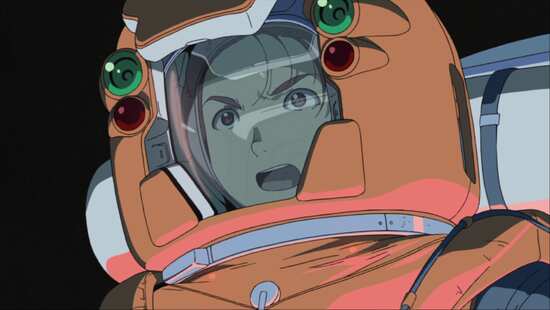
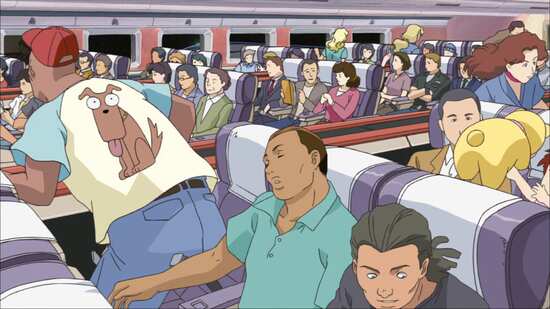
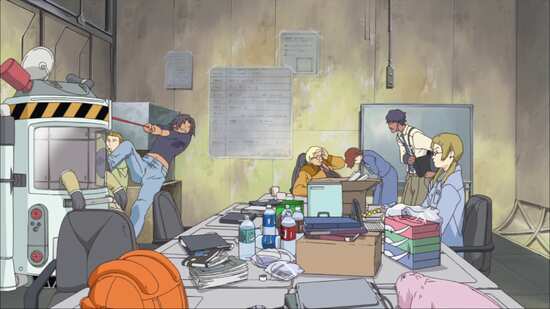
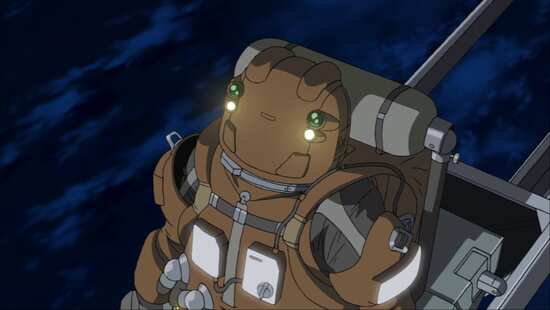

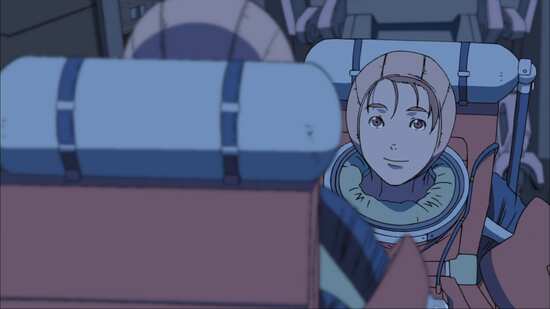

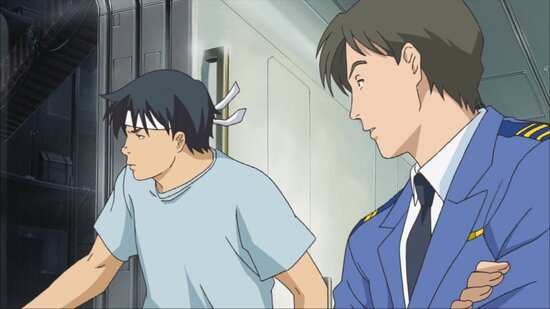
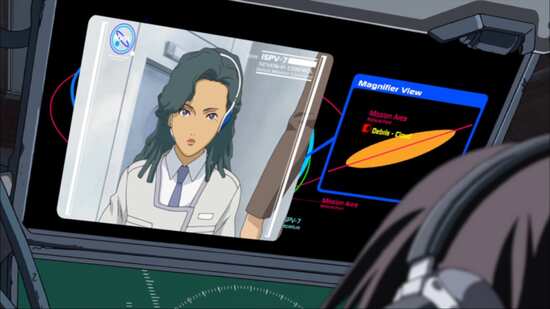
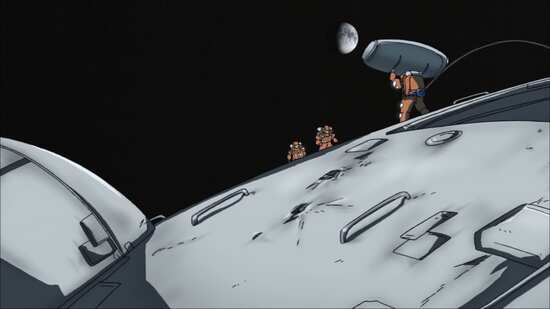
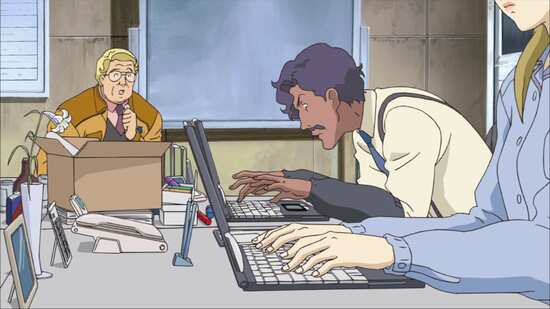


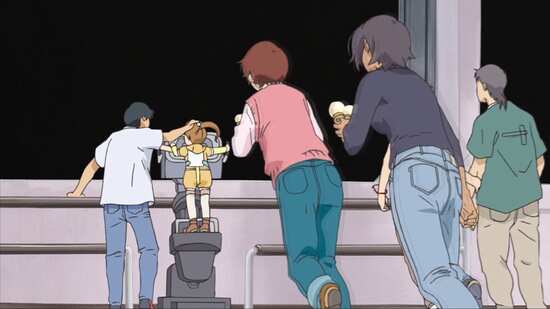

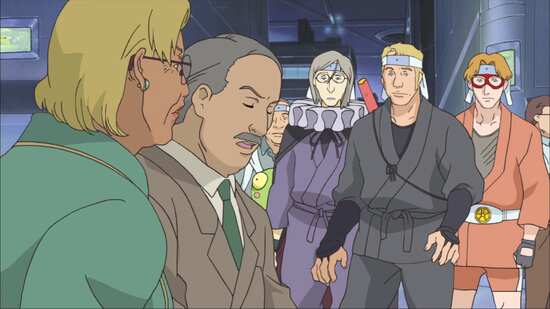
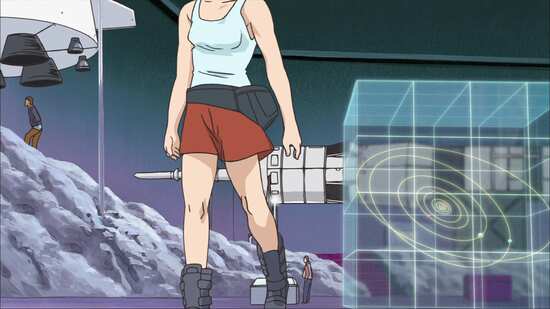



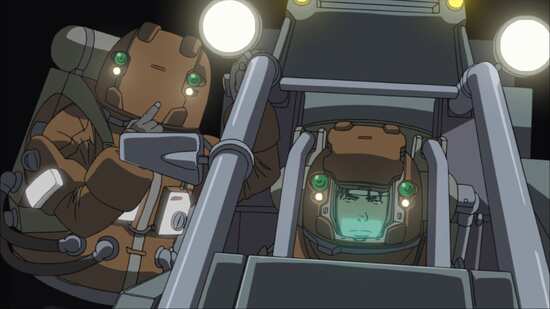
Your Opinions and Comments